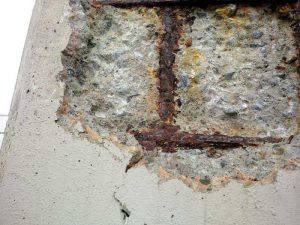Ensuring Durable Concrete: Marine infrastructure

Kitimat and Prince Rupert are two of the proposed locations for LNG terminals. Being port cities, concrete structures in these locales face a regular barrage of sea spray and salt. Prince Rupert in particular is known as one of Canada’s wettest cities, experiencing more than 2550 mm (100 in.) of rain, annually. The temperature drops just below freezing on a regular basis during winter, resulting in constant freeze/thaw cycles throughout that time of year.
Diego Orozco, a civil engineer specializing in LNG tank construction, project, and risk management, worked on an LNG terminal project in Mexico. He attests to the massive amount of concrete required by these types of facilities.
“The Mexico project used over 80,000 m3 [105,000 cy] of concrete for the outer shells of the storage tanks holding LNG, as well over 35,000 m3 [177,000 cy] of additional concrete to construct the jetty and other buildings within the processing area,” he explained.
One of the most likely LNG projects to go ahead in Kitimat, B.C., would itself be using more than 150,000 m3 (196,000 cy) of concrete in that project alone. Orozco further goes on to state the durability of the concrete is critical to the long-term success of this LNG infrastructure.
If these projects move ahead as expected, the quality and durability of this vast amount of concrete may be the only barrier between damaging materials and sensitive marine environments, where delicate ecosystems depend on the status-quo for survival, meaning the construction cannot fail or damage the region.
Thus, proper waterproofing of the concrete is vital to ensure the durability of the infrastructure is set and maintained at the highest level possible. To create a durable structure, the permeability of the concrete must be lowered. This requires a waterproofing solution that reduces permeability, while enhancing the durability of the concrete structure.

Internal crystalline admixtures
Internal crystalline admixtures have been growing in popularity over the past decade as an increasing number of high risk, successful projects have been brought to the forefront. This type of waterproofing is simple to apply, as the admixture is added directly to the concrete mixture itself.
Once the crystalline concrete mixture is poured, the waterproofing capabilities of the admixture actually improve their effectiveness over the lifespan of the structure because of the technology’s ability to reactivate and ‘self-seal’ cracks. Further, crystalline products permanently seal new hairline cracks, and if larger cracks occur, they can be repaired from the negative or dry side. This means future repairs or maintenance are cost-effective and simple to achieve. Crystalline technology not only provides waterproof concrete, but also essentially increases the durability of the structure as a whole by lowering permeability.
The fact is, building durable infrastructure leads to sustainable construction. In order to avoid major repair bills that are less than effective, or being forced to fork out sometimes hundreds of millions in premature replacement costs, water must be kept out of the concrete structure with a long-term solution. In keeping the water out, damage to the structure as a whole can be substantially reduced.
 Jackson So, B.A.Sc., EIT, is a concrete permeability specialist with Kryton International Inc. He has been involved with the research surrounding concrete waterproofing even before graduating from the University of British Columbia in 2006 with a degree in materials engineering. So may be reached by e-mail at jso@kryton.com.
Jackson So, B.A.Sc., EIT, is a concrete permeability specialist with Kryton International Inc. He has been involved with the research surrounding concrete waterproofing even before graduating from the University of British Columbia in 2006 with a degree in materials engineering. So may be reached by e-mail at jso@kryton.com.







